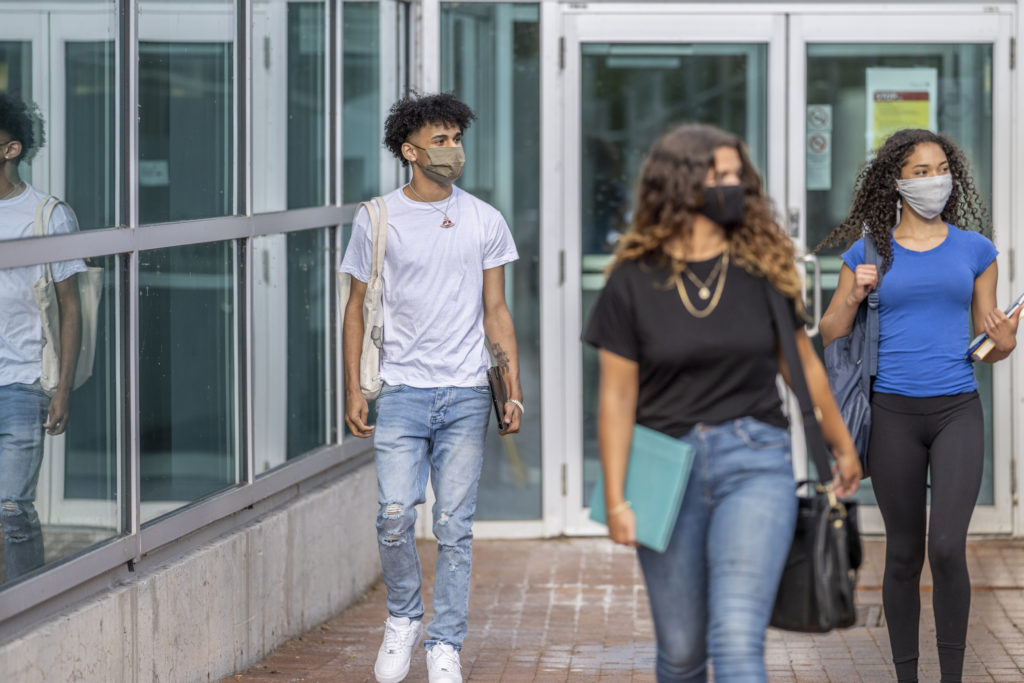Finally, the fall semester has begun and put an end to summer’s biggest question: “When will colleges reopen?” Higher education institutions had to either implement carefully crafted plans for returning to campus, or commit to remote instruction for the fall semester.
So now, the question on everyone’s minds: How are in-person classes going, and what does it all mean?

Fall hasn’t gone “remote”-ly as expected
Many colleges and universities weighed the decision of whether or not to bring students back to campus, but when it came down to it, understandably, only 22% of schools in the US chose to open their doors with increased safety measures once the fall semester began.
The remaining 88% of schools, including California State University’s 23 campuses, decided to extend their remote learning solutions and online courses into the fall semester.
Have in-person classes been successful?
Of all the schools that implemented safety measures for their students’ return to campus this fall, the University of Illinois’s may have been the most rigorous. In late August, the university welcomed over 35,000 students back to a campus fully equipped with twice-a-week saliva Covid-19 tests, an app that monitors results and contact tracing, mask and social distancing requirements, and self-isolation policies for any students whose test results came back positive.
And yet, the school demonstrates that even state-of-the-art testing, technology, and planning are no match for a virus that thrives on social contact and thousands of young people returning from six months of isolation with their parents. On September 2, 784 positive cases emerged on campus, and the university announced a crack down on parties, increased self-isolation requirements, and implemented an online form for students to report risky behavior.
Higher education campuses nationwide fight outbreaks – and human behavior
Of course, the rapid spread of coronavirus on college campuses has been an experience shared by institutions across the country. On September 14, the University of Arizona encouraged students to participate in a “voluntary quarantine” due to a rising number of cases. Several days prior, the University of Wisconsin at Madison announced that they would pause in-person instruction to allow for a two-week quarantine, in response to a positive testing rate among college students of over 20%. The University of Tennessee at Knoxville chose to evacuate their residence halls to make room for students to self-isolate. The list goes on.
Institutions nationwide are building the plane as they fly it — all while grappling with the limitations of still-emerging science and the unpredictability of human behavior. In an article from Bloomberg, Emily Landon, an epidemiologist and infectious expert at the University of Chicago Medicine says that, “[Universities] might not have done enough thinking about natural human behavior. If you don’t help people see an alternative that is palatable, then they’re going to go back to what they always did.”
Read next: 3 Rules for Successful Enrollment Email Marketing
Steps forward
The virus has proven difficult to contain, and universities have been warned about the danger of sending students back home, potentially spreading the virus even further.
So what college reopening models and strategies are schools undertaking to help mitigate the risks of the virus and ensure students are able to succeed this fall?
- Testing higher-risk people (such as those that live in fraternity house) three times a week instead of two (University of Illinois)
- Suspending students who violate coronavirus-related safety guidelines (Ohio State University)
- Limiting face-to-face activities (Louisiana State University)
- Identifying positive cases more quickly, and using text messages instead of phone calls to alert students (University of Illinois)
- Pivoting to remote learning while keeping students contained on-campus to let cases go down (University of Dayton)
- Requiring students to sign a pledge asking students to commit to a “semester of inconvenience” that includes forgoing concerts, parties, and other events that would lead to the spread of the virus (Purdue University)
- Quarantining Greek houses, where there is an 8.1% positive rate (Indiana University)
- Providing increased support for students while they self-isolate (University of Illinois)
- Extending remote learning for the duration of the semester, with the exception of a very limited amount of classes that require in-person instruction (Temple University in Philadelphia)
- You can find live updates about higher education’s response to coronavirus here.
Read next: 5 Things Your Prospective Students Wont Tell You
What comes next?
In a previous post, we explained how enrollment marketing has changed, because coronavirus has changed the product. Students are no longer looking for “the college experience” as we know it. Instead, they are looking for affordability, flexibility, and career training to navigate whatever the future holds for them. You can learn more about our research on how coronavirus impacts students here.
For students and universities alike, the most immediate goal is to emerge from the fall semester intact. But it’s crucial for universities to be able to look beyond the current circumstances towards a long-term strategy that will drive student loyalty and engage prospective students for the spring semester and beyond. How universities conduct themselves now, in this time of major restructuring, will set a precedent in our post-pandemic landscape.
You don’t have to generate higher education marketing strategies alone — in fact, your future students are probably already in our database. Contact us to learn more about our higher education marketing services.




